With the ability to encounter African wildlife so close to the city, plenty of local handicraft markets, and rich cultural activities, Nairobi has more to offer than you might think.
There is a good chance Nairobi only made it on your list of places to visit because it is one of the largest cities in East Africa and a large airport hub you plan on using as an entry or exit point for your safari. Sure, Nairobi isn’t the prettiest of cities, has atrocious traffic, and doesn’t have a great reputation for safety but why not make the best of your trip and discover 10 places not to miss whilst you are in the area?
Note / This article may contain affiliate links. If you purchase products or services we recommend, we’ll earn a small commission at no extra cost to you. Thanks for supporting our blog, it means the world to us! — Béné & Guilly

1 / Adopt an elephant at the Sheldrick Wildlife Trust
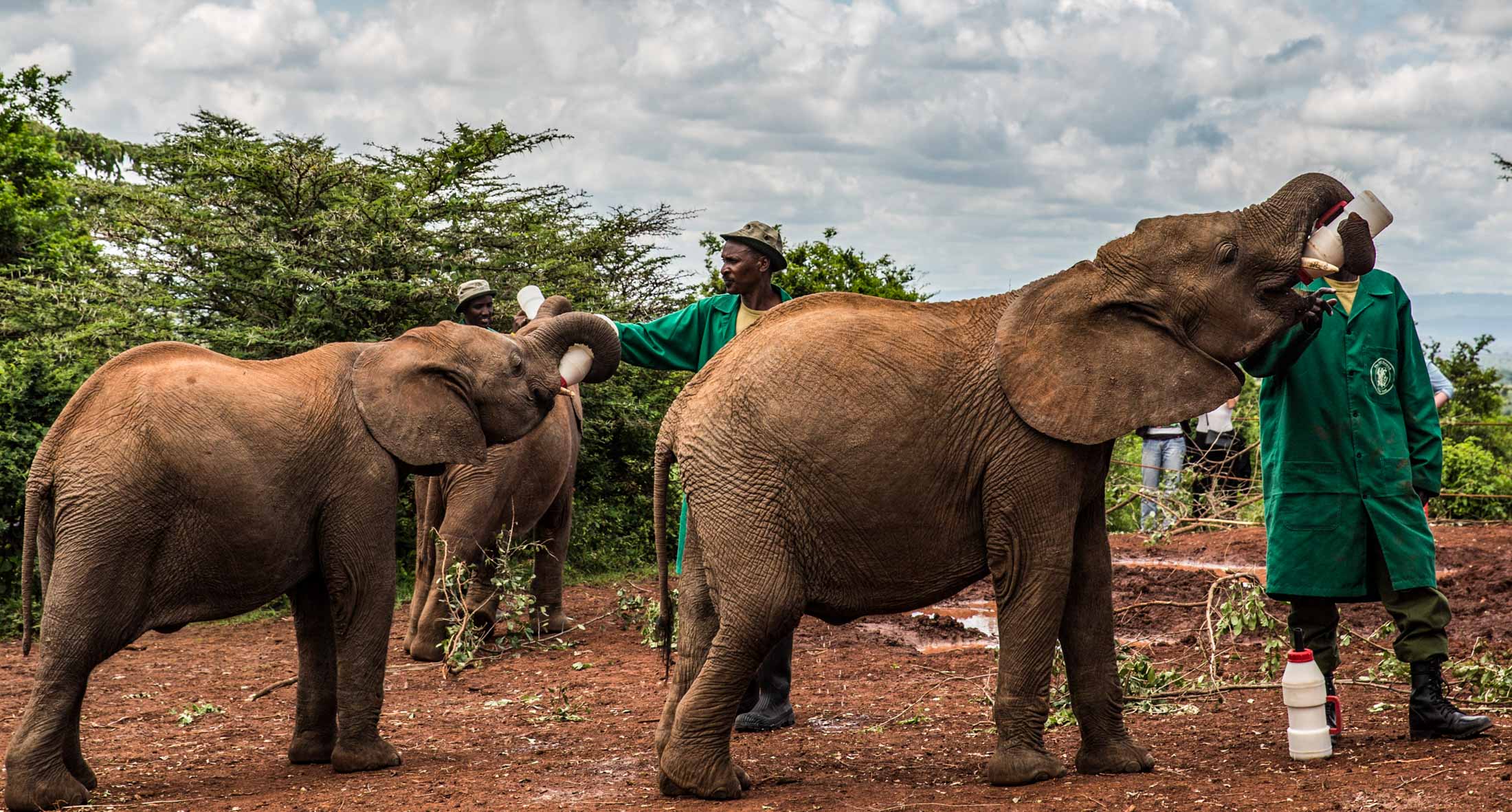

The Sheldrick Wildlife Trust’s elephant orphanage is located South West of Nairobi. The public can come and visit the orphanage daily for the elephant feeding time, held between 11am and 12pm.
The rescue project gives a second chance not only to elephants but also to rhinos and giraffes which have been orphaned. The causes are usually sad, ranging from ivory trafficking, conflicts with humans, illegal logging, and habitat destruction. They also run many prevention projects such as aerial surveillance, community education projects, anti-poaching teams (de-snaring), canine units, and more. Attending the daily feeding time is a way to support these projects financially as well as donating or adopting an elephant.
Be aware that it is a popular attraction especially in high season (June to August). If you would like to attempt finding the best observing spot, we would recommend you arrive well in advance, at least 30min ahead of time. Although, to be honest, despite being present early, it is difficult to know in advance where the elephants will decide to congregate on that day. You will have the benefit to be on the first row at least.
We had the chance to meet the 16 baby elephants currently being raised at the nursery. To avoid elephant chaos when feeding, they split them into two groups so we could observe each group for half an hour.
The elephants only care about the food to start with, but being babies, it doesn’t take long before they start playing in the mud and with each other. It’s adorable. Some were drinking and spraying water directly from the hose that was lying on the ground which seemed to be good fun.
Whilst elephants get fed and play around, one of the staff provides information and explanations about the project, the baby elephants, and elephants in general. The public had the opportunity to ask questions so it turned out to be a rather educative visit too.
- Opening Hours / Every day 11am-12pm
- Visit Time / 1h (+30min waiting prior)
- Cost / Ksh. 500/pers
+ Giraffe Centre
+ National Park combo
2 / Kiss a giraffe at the Giraffe Centre
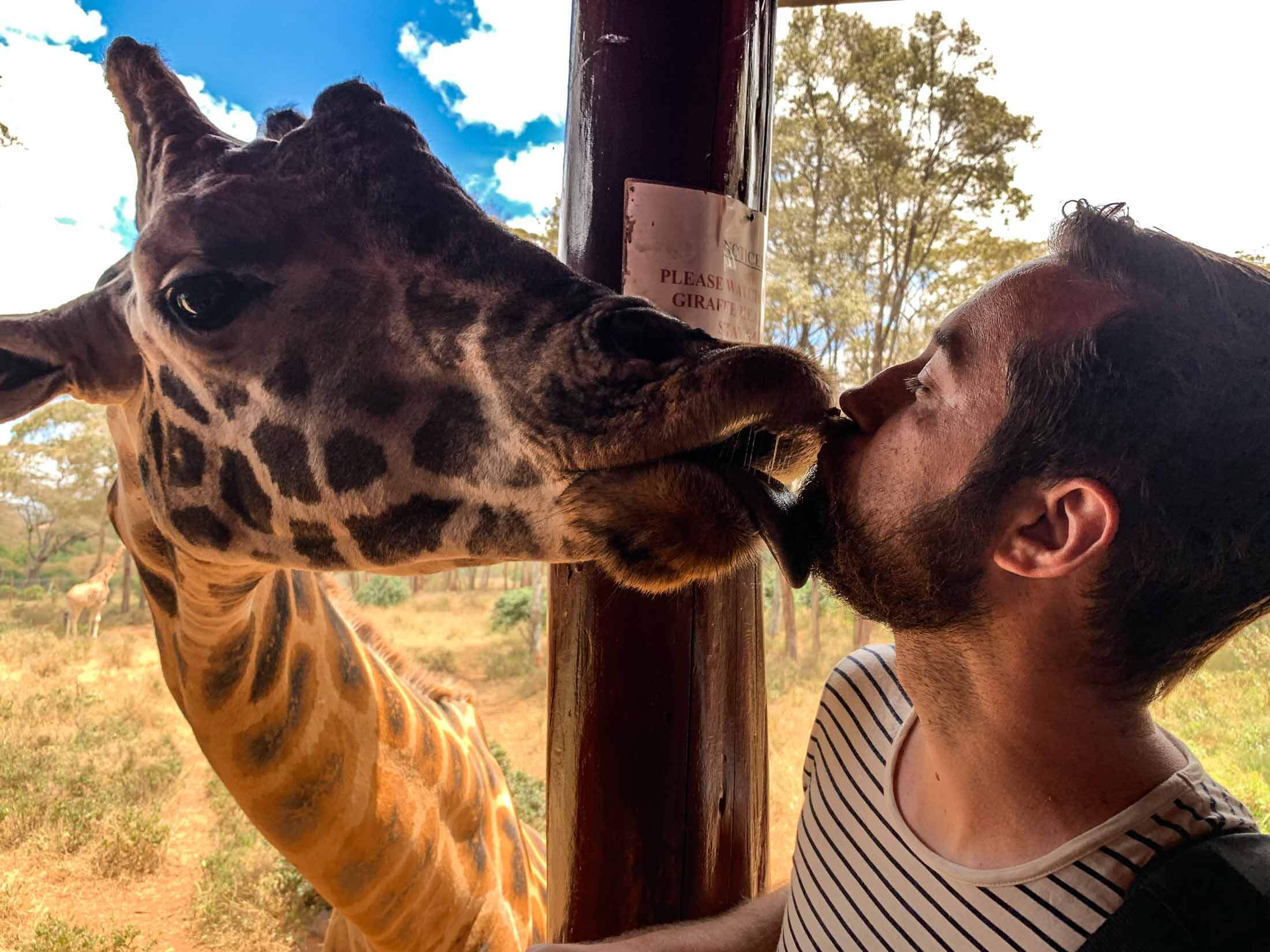
The Giraffe Centre (its parent entity being the African Fund for Endangered Wildlife – A.F.E.W.) is a non-profit organization that endeavors to protect and expand the Rothschild’s giraffe population. There are indeed three main sub-species of giraffes, the reticulated giraffe, the Masai giraffe, and the Rothschild’s giraffe being the most endangered subspecies. It’s estimated there were 1,669 Rothschild’s giraffes in the wild in 2016. Their numbers were down to 130 in 1979 when Jock and Beth Leslie-Melville started their conservation efforts and brought two young giraffes back to their property intending to breed them. They have also made the property an education center since 1983 to raise awareness about the animal and wildlife in general, among the Kenyan population.
The giraffes are free to roam around and decide when they want to come and see the public, usually to get food from them. You can indeed buy food pellets to feed the giraffes. They do eat a lot of food every day and those pellets are just treats for them. Be careful when feeding them as some of the giraffes are not as well-behaved as others and can become impatient and even headbutt you if you tease them. To feed them safely, you need to hold the pellet between your thumb and index, then let the giraffe do the rest. If you are game, you can take a similar approach by putting the pellet between your lips and let the giraffe French kiss you. There is a platform you can access so your new lover doesn’t have to crouch in order to kiss you.
There are a few guides available close to the entrance if you would like to learn more about the center and giraffes. It will only cost you a few dollars for some tip at the end of the tour. We did take one ourselves and it was quite informative. That’s how we can tell you the easiest way to identify a male from a female is by looking at its horns. If they look bald at the top, then it’s a male, otherwise a female. Some can even grow a second pair of horns behind the first. Pro tip: the guide can also double up as a skilled photographer!
 | Giraffe Manor gallery
| Giraffe Manor galleryThe Instagram-famous Giraffe manor is located next door. You can spend the night there and share your breakfast with giraffes. It looks super cool, but it will cost you a small fortune starting at US$875 per person sharing (that’s US$1,750 per double room).
- Opening Hours / Every day 9am-5pm
- Visit Time / 1h
- Cost / Ksh. 1,500/pers
+ Giraffe Centre
+ Giraffe Centre
+ Nairobi National Park
3 / Go on an urban safari in Nairobi National Park


If you are in Kenya for a day or two only, you might think you won’t have time to go on a safari, and you would be wrong! Nairobi has to be the city in Africa with the closest safari park! Where else could you take a picture of a giraffe with a skyline in the background?
Don’t believe you will get a subpar experience simply because the park is close to human activity. The park is host to many giraffes, zebras, and wildebeests, several hippos, buffalos, rhinos, hyenas, lions, all in a small area which increases your chances to find them! Admittedly, you won’t find any elephants in the park, but you could still easily tick off 3 of the big 5 animals (buffalos, rhinos, and lions) and possibly a 4th with a leopard if you are super lucky.
The park is signposted and quite easy to navigate on your own but you could decide to hire a guide who will know the area and help you spot the animals. If you decide to rent a car, a small SUV will be largely sufficient to handle the terrain.
You can access the park year-round, with January to March being hot and dry, April to June hot and wet, and July to October very warm and wet. Pay attention to opening hours as the park is closed on Sundays and closes early on Saturdays.
-
Opening Hours / Monday-Friday 8am-5pm
Saturday 8am-12pm - Visit Time / 1h-1 day
-
Cost / US$43/pers/24h
+ Ksh. 300 or Ksh. 1,030 per vehicle (under 6 seats vs 6-12 seats)
Consult all park fees
+ Elephant Orphanage
+ Giraffe Centre
4 / Look back on colonial times at the Karen Blixen Museum

The Karen Blixen Museum is located at the foot of the Ngong Hills and used to be the home of Danish author Karen Blixen. She has been made famous through her autobiographical book Out of Africa from 1937 which depicts what life was like on an African farm estate during colonial times.
The museum was opened in 1986 following the popularity of Out of Africa, the movie, in 1985 despite the fact the house was not pictured in it (it was filmed in her first house nearby). Guided tours are offered to visit the 1917 house and its grounds where you can see some of her possessions, period furniture, movie props, and original equipment from the coffee farm.
- Opening Hours / Every day 8.30am-5.30pm
- Visit Time / 1h
- Cost / Ksh. 1,200/pers + tip for guide
+ Giraffe Centre
5 / Eat at the Carnivore
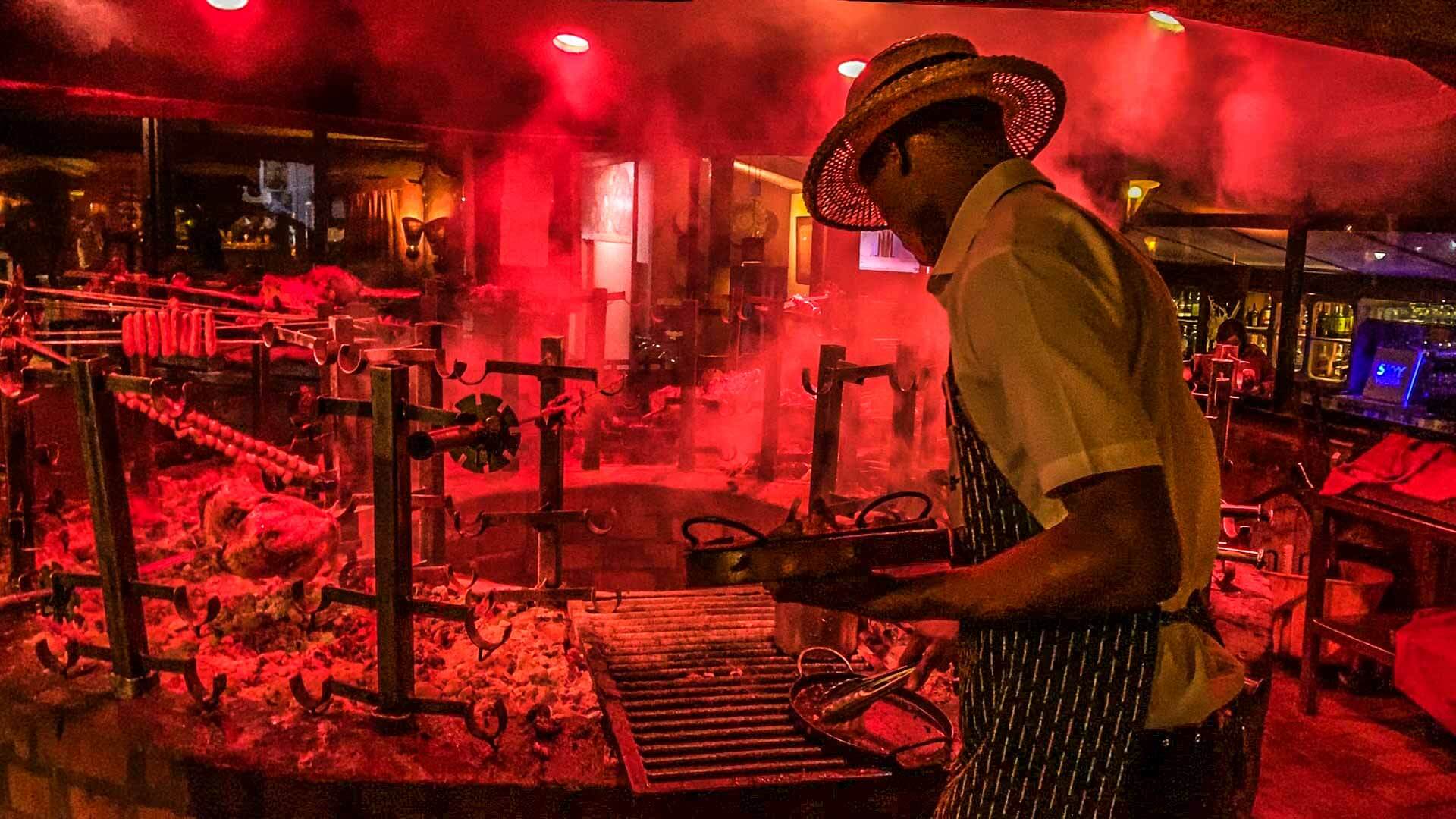
This one might not be for everyone at it is not necessarily the most authentic African experience in our opinion (although African barbecues are indeed a thing), but it is a bit of an institution in Nairobi so we would be remiss if we didn’t mention it. Moreover, we have been there ourselves and can share our experience!
But what is the Carnivore anyway? It’s a restaurant holding true to its name by offering an all-you-can-eat range of meats including lamb, pork, beef, chicken (different parts too), and more exotic ones like crocodile, ostrich, and camel. If you are familiar with Brazilian barbecues, the concept of the Carnivore isn’t far off. The meat is cooked on long Masai swords over charcoal and the waiters come around to your table when it’s ready. You don’t get to decide in which order the different dishes arrive but you are fed an endless amount of meat until you tap out. The restaurant is pretty vast and the setting and decoration are pleasant with both inside and outside tables.
The price includes bread with butter, salads, a soup, a selection of desserts, and Kenyan coffee so it’s good value by Western standards, but quite expensive by local standards. There appear to be options for vegetarians too although we cannot comment on them. It’s not inclusive of drinks so you will need to add these to the final bill.
Overall, we must admit that the restaurant was nothing mind-blowing to us. The setting was nice but it didn’t feel very authentic considering all customers were tourists like us. The parking lot was full of 4WD Land Cruisers on their way to or returning from safaris. Guides from various companies were greeting each other as if it was usual for them to bump into each other there. Moreover, we’ve eaten at Brazilian barbecue restaurants which were tastier and, we were hoping for something a bit more local.
As for the price, each customer is quoted a different price. The advertised price for the set menu for walk-ins is Ksh. 3,600 (about US$35) but customers seem to all end up paying different prices. How they determine those prices still is a mystery to us but, from what we could gather, it seems to be cheaper if you have reserved prior through a third party (e.g. your guide/safari company or a travel agent) and if you are willing to pay cash and in US dollars. There has to be some incentive for companies/guides to bring you there too. Some response from a Carnivore manager to a review on TripAdvisor seems to suggest they don’t charge over US$40 so, all in all, we should be happy having paid only US$28.
As for our experience, it was stained from the get-go. There seemed to be some argument about how much we should pay and if we could pay by credit card as soon as we arrived. The same arguments were had again at the end of dinner. This hiccup is how we got a hint of the shady price setting practice everyone seemed to be complicit of. Having to worry about how to pay for the whole dinner likely didn’t help to set us in the right mood.
We’ll leave the final choice to you. Overall, we are sure it can be a great experience if you’ve never tried this type of restaurant before (reviews mostly suggest it is) and don’t mind the varying prices. Maybe we were just tired and unlucky.
- Opening Hours / Every day 10am-3pm and 6pm-10.30pm
- Visit Time / 1.5h-2h
- Cost / US$28-40/pers + drinks
+ Elephant Orphanage
+ Giraffe Centre
6 / Dominate Nairobi from the Uhuru Park
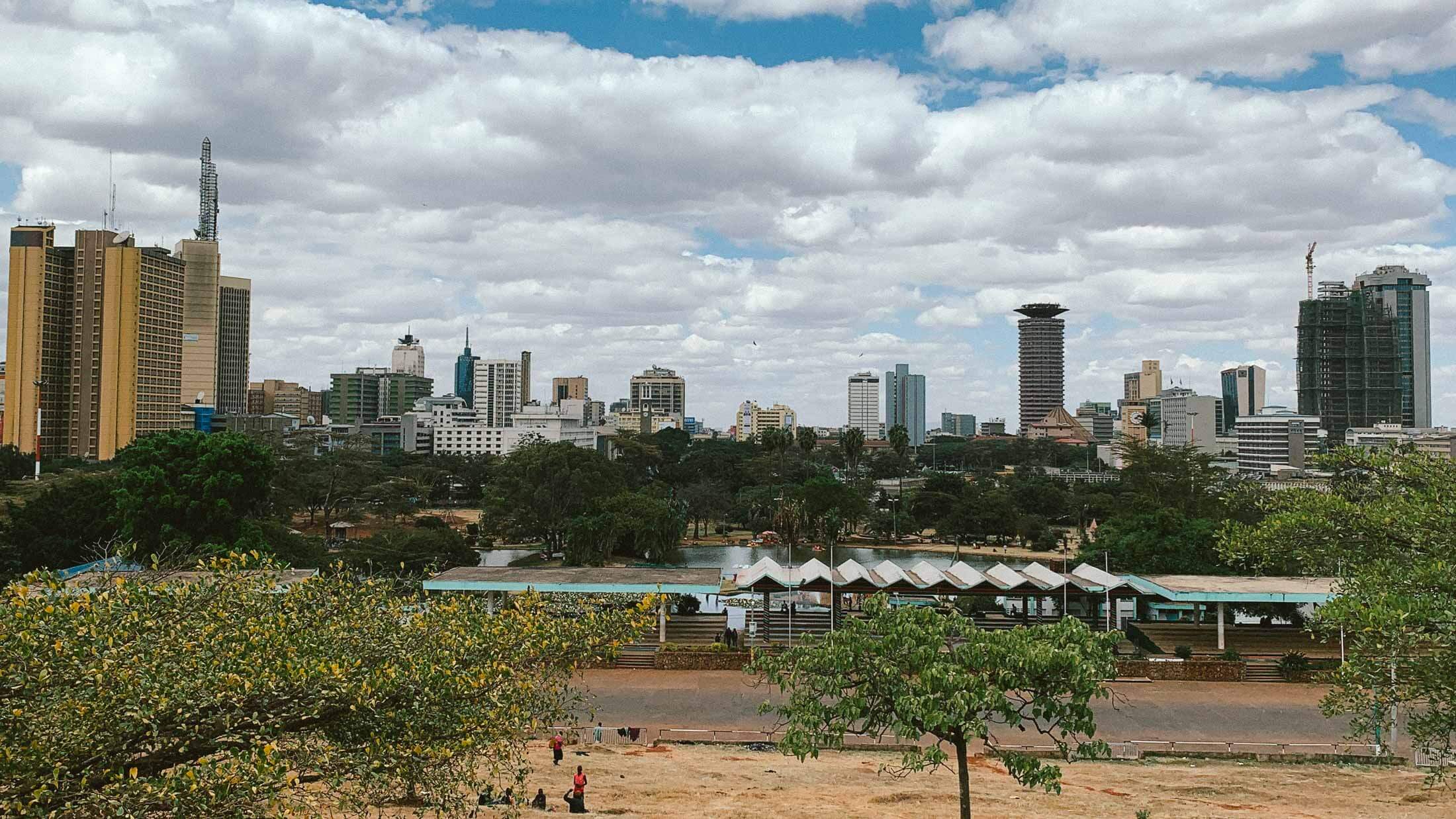
The Uhuru park is only a short stroll away from anywhere in Nairobi’s CBD as it’s adjacent to it. It contains an artificial lake (on which you can take boat rides) and multiple national monuments. The park has been the site of many protests and political events and has therefore historical significance for many Kenyans.
If you head up the hill towards the west, you will reach the Uhuru Park viewpoint overlooking Nairobi’s CBD which gives you a good wide-spanning view.
Unfortunately, there was a fair bit of litter around the park when we visited. There were a few people in the park, some were napping and looked like homeless people who didn’t make the place very appealing. It’s also to be avoided at night as it’s not safe. It’s a shame as this place could be so much more enjoyable if the city/government gave it the attention it deserves.
Even better, if you have extra time, you could combine the visit to the park with a historical and cultural city walk.
- Uhuru Park
- Google Maps
- Opening Hours / Every day 24h (not safe at night)
- Visit Time / As long as you want
- Cost / Free
7 / Understand real poverty in the Kibera slum


Kenya is famous for its safaris, beaches and pretty landscapes so it can be very easy to forget that part of its population is extremely poor. In contrast with some of Nairobi’s areas, you can find the Kibera slum just a few kilometers away from Nairobi’s business district. It is the largest urban slum in Africa. Numbers as high as one to two million have been claimed for its population but a 2009 census reported a population of 170,000 people instead. The truth is probably somewhere in the middle and they all live in a two square kilometers area which looks crammed regardless.
The conditions of living are extremely difficult for its residents with most earning less than a dollar per day, high unemployment rates, scarce clean water, lack of electricity, and rampant diseases because of a lack of hygiene.
Despite the above, it is more and more frequent for tourists to include slum tours as part of their itineraries. Some are simply curious to see the conditions in which people live and make their mind about it. After all, it is true that what is out of sight is out of mind, so visiting slums can only create empathy for its residents which can’t be a bad thing. Others want to dedicate however long they can afford to help the local population and children in school, even if for a day.
On the other hand, slum tourism can be dividing and controversial as some believe it to be voyeurism. Others are worried about safety when visiting, although we haven’t seen any reports of tourists being assaulted or stolen from. We would advise paying close attention to your valuables anywhere in Kenya regardless.
We lacked time to visit the slum ourselves. It wasn’t our top priority when in Kenya, but to be honest, we are not sure we would have visited either. We love the idea of meeting local populations but Kibera isn’t the only poor area in Kenya that we could go to, and there is something off about calling it “tourism” or paying someone to guide you there (there are other ways to support local communities financially). So it is a complicated topic. We thought we would put it on the list for you to decide. Feel free to share your opinion in the comments.
- Kibera Slum
- Google Maps
- Opening Hours / Every day
- Visit Time / As long as you want
- Cost / Free
8 / Learn about Kenya and its tribes at the Nairobi National Museum


Located just outside the city center, the National Museum offers several natural and cultural exhibits.
Natural exhibits cover birds of East Africa with 900 stuffed specimens, mammals with dozens of them stuffed too, and “the Cradle of Humankind” which includes a large collection of skulls.
On the cultural front, the exhibit about Kenyan and East African history is interesting as it presents a counter angle to the typical colonial history we are used to. Exhibits covering the various Kenyan tribes will also give you insights into the richness of the country and would be valuable for you to know about before you head onto a safari.
A life-size reproduction of Ahmed the elephant, that was a symbol of the poaching crisis in the 80s, can also be seen at the museum.
Volunteer guides are available at the entrance for free (although a tip is expected) and can provide tours in English or French (and possibly other languages).
- Opening Hours / Every day 8.30am-5.30pm
- Visit Time / 2-3h
- Cost / Ksh. 1,200
+ City walk
9 / Bring souvenirs back from local markets
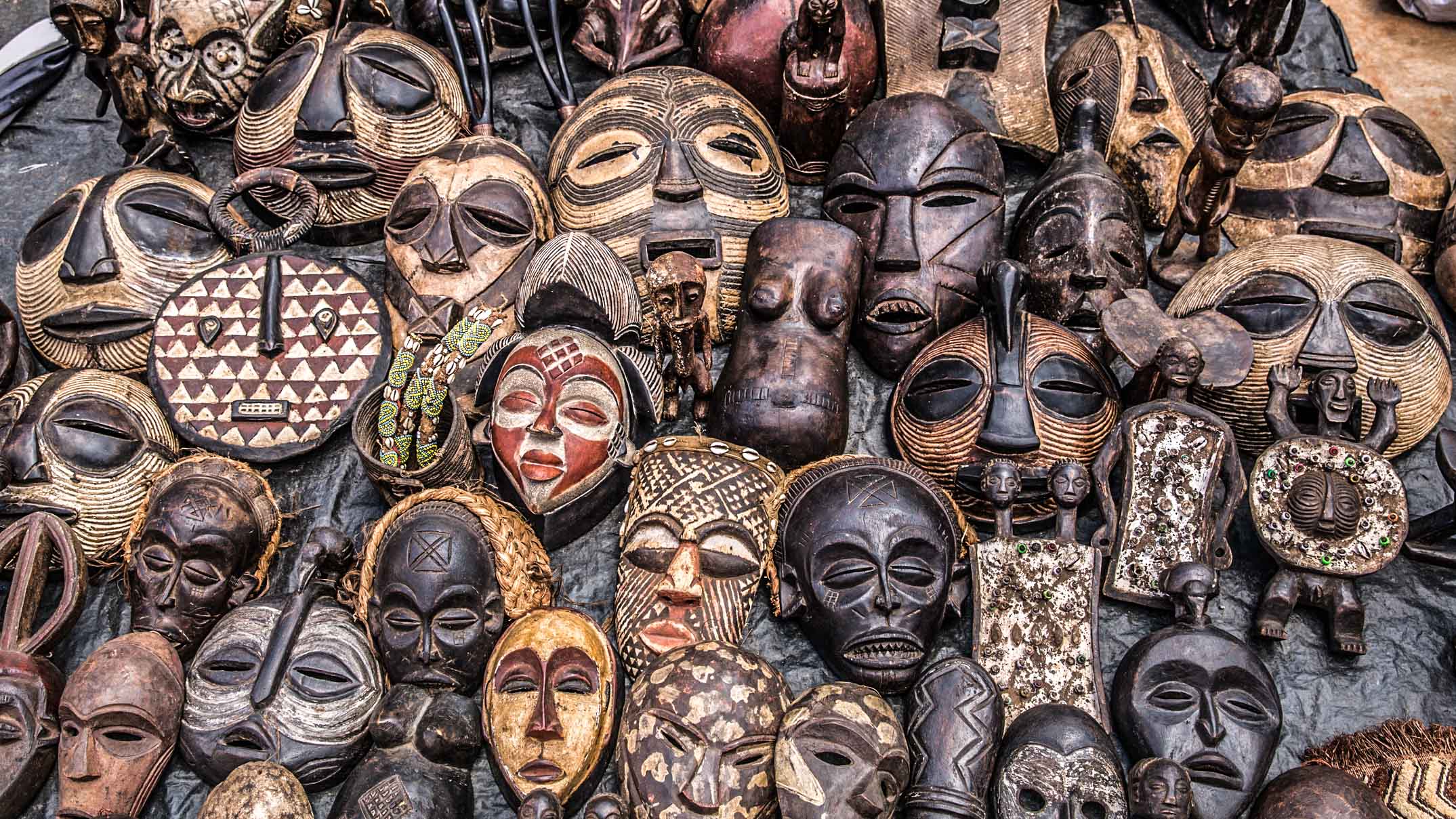

The Hawkers Market
If you would like to get an authentic experience and mingle with the locals, there’s usually no better place than fresh produce markets. Of course, you will also be able to discover some exotic products and stock up on fresh fruits and vegetables inexpensively.
The Hawkers Market is located in Parklands a few kilometers north of the CBD. Many westerners visit the market as it is safe to do so, but don’t go about flashing your riches. At the entrance, you will find some men willing to help you carry your purchases for a small fee. This could be a cheap way for you to interact with the locals and get insights on the market or even their country if you are so inclined.
- Hawkers market
- Google Maps
- Opening Hours / Every day 6am-6pm
- Visit Time / As long as you want
- Cost / Free
+ National Museum
+ Railway Museum
+ City tour
The Maasai Market
The Maasai Market is the best place for you to find souvenirs and gifts in Nairobi. It’s an open-air bazaar where you will find all sorts of local handicrafts, paintings, clothes, and jewelry made by local artisans.
Be ready to put your negotiation skills in practice to haggle the prices down. Another option is to come to visit it with a local so you get a better chance to pay the local price.
To make things “simple”, the market’s location rotates based on the day of the week:
- Tuesday: Kijabe Street opposite the Norfolk Hotel
- Wednesday: Capital Centre on Mombasa Road near the airport
- Thursday: Nakumatt Junction Shopping Mall on Ngong Road
- Friday: Village Market in Gigiri (the upper car park) and Lavington Mall
- Saturday: The High Court parking lot in the city center (behind the Hilton)
- Sunday: Yaya Centre in Hurlingham
If you’d like to avoid the crowds and potentially pickpockets, you might want to avoid Saturdays when the market is in the CBD. The Yaya Centre on Sundays and village market days would be better options.
- Maasai market
- See paragraph above for locations based on day of the week
- Opening Hours / Tuesday-Sunday 8am-6pm
- Visit Time / As long as you want
- Cost / Free
The Kariokor Market
The Nairobi city council decided to relocate all CBD street hawkers to the Kariokor market in 2019. This implies you will be able to find anything and everything in this market. It’s another great option to buy gifts and souvenirs as its location is not too far from the CBD and doesn’t move around like the Maasai market.
Similarly to the Maasai market, you will be able to find trinkets, curios, art, wood carvings, and the like.
- Kariokor market
- Google Maps
- Opening Hours / Every day 6am-6pm
- Visit Time / As long as you want
- Cost / Free
10 / Hike the seven Ngong Hills


The Ngong Hills are part of the Great Rift Valley, a ridge system that runs through Kenya. It is located southwest of Nairobi and overlooks the Nairobi National Park. Its peak towers at 2,460 m above sea level, but bear in mind that Nairobi’s altitude is already 1,795 m so it is quite feasible.
It is a great place to hike while enjoying the scenery. Many traditional colonial houses, dating from when Kenya was under British rule, can be seen in the area. The grave of Denys Finch Hatton, a big game hunter and lover of Karen Blixen, can also be found on its slopes. It can be seen in the 1985 Out of Africa film, based itself on the eponymous book from Karen Blixen.
There are seven hills in total with four main hills followed by three smaller ones. It should take you roughly two to three hours one way to complete the hike and end at the Corner Baridi exit. Once there, you can hire a vehicle to get back to your starting point or take a taxi back to the city. There is also a zipline to mix things up. If you would rather turn around, it’s a 15km return trip which should take 4-5h in total.
Be aware that you may be required to hire a ranger for security from the Kenya Forest Service as muggings have unfortunately occurred in the past. Although quite a few people report not using one and not feeling unsafe at all.
If you would like to continue exploring the beautiful Great Rift Valley, you could also do a day tour from Nairobi to climb Mount Longonot Park, a hibernating volcano, or cycle with zebras and warthogs in Hell’s Gate NP.
- Opening Hours / Every day 6am-6pm
- Visit Time / Half a day to 1 day
-
Cost / Ksh. 600/pers
+ Ksh. 2,000 for ranger for your security (if you deem it necessary or are not forced to pay for one) - Distance / Ngong Hills are about 35km from Nairobi CBD. It takes roughly 1h to get there.
We hope you could find inspiration to organize your trip to Nairobi. Share the article below with your travel buddy(ies) to get their opinion.
Do you know of any more gems we might have missed in Nairobi? Please do share in the comments! Or simply share your opinions on our recommendations.




![✨Where will you go next when you can travel again?
[version 🇫🇷 en bas⬇️]
.
.
🇦🇺 Never stop exploring 🇦🇺
We’ve been good at sharing daily stories of our trip but not so great at sharing photos and sharing posts, so we’ve about to catch-up on the last few months on the road with La Banana!
.
.
We’ve crossed the South of France and North of Italy, explored Slovenia and Croatia and today we are in Montenegro! But first things first, we’re taking you in France where it all started!
.
And who’s never dreamt of traveling to France?! There is so much to explore that you could easily spend a year traveling in our beautiful home country!
.
.
En route!
.
.
🇫🇷 Explorer le monde 🇫🇷
On s’amuse bien à partager nos stories tous les jours, mais on a pas était top a partager des photos et posts tout au long de notre voyage, alors voila on va catch-up sur les derniers mois sur la route avec La Banana!
.
.
Nous avons traversé le sud de la France, le nord de l’Italie, avons exploré La Slovénie et la Croatie et aujourd’hui nous sommes au Montenegro!
.
.
Alors revenons en arrière la où tout à commencé, notre douce France! Qui n’a jamais rêvé d’explorer en long et large notre beau pays? Il y a tellement à faire que meme sur un voyage d’un an il y aurait toujours tant à découvrir! Ici ça n’est qu’un aperçu!
.
.
En route!
.
.
✨Mais vous, oú irez-vous voyager dès que vous le pourrez?](https://nomadsfix.com/wp-content/plugins/instagram-feed/img/placeholder.png)
 by Guillaume Debever and Bénédicte Bouchereau. All rights reserved.
by Guillaume Debever and Bénédicte Bouchereau. All rights reserved.